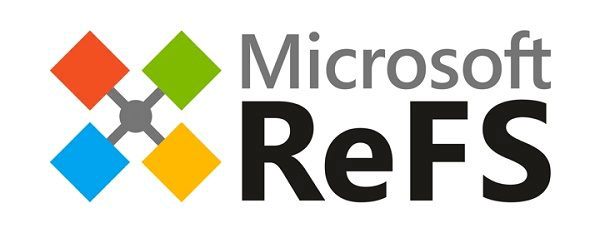Recover deleted, formatted or corrupted data from hard drive or external device.
Free TrialOn Windows Server 2012, Microsoft launched its new ReFS file system. It's featured in Windows 10 and can only be utilized with the drive-pooling Storage Spaces functionality.
The ReFS file system will get updates in Windows Server 2016, and these updates will also be included in Windows 10 Pro for Workstations. This article contains a lot of information on the Resilient File System (ReFS).
Quick Navigation:
Do You Know What A Resilient File System Is?
Server operating systems using Windows 8 may use the Resilient File System (ReFS) to store and manage data on their hard drives. ReFS is based on the New Technology File System (NTFS) but has additional features.

It was introduced in the Windows 8 server version. It is meant to fix disk corruption automatically and is integrated with Storage Spaces. Protogon is another name for ReFS.
ReFS' Primary Functions
ReFS includes four new features compared to NTFS. The most important things to consider are disk construction reliability, built-in resilience, compatibility, and deletion.
Some features of NTFS, including compression, encryption, hard links, and disk quotas, are not supported by ReFS. In addition, ReFS volumes cannot be used to boot Windows.
The mirrored and striped volumes that were previously stored on dynamic disks have been replaced with storage pools that are mirrored and stripped in Storage Space. However, with ReFS, automated error-correction is only supported for mirrored space.
Let's take a look at each of ReFS' features one by one.
The Reliability Of The Disks' Construction
ReFS has no true restriction on the size of folders or the amount of data that may be stored in them (hardware limits still work). The maximum permitted file and volume sizes are 16 exbibytes and 1 yobibyte. Large, medium, and tiny amounts of free space are determined via a multilayer distributor with three split tables.
Resilience Built-In
In order to improve data integrity and availability, ReFS adds a new function that can both check for damage and repair it in real-time, all in one step. When you read or write a file, ReFS will check to ensure there are no errors.
As a further complication, ReFS only checks files for corruption when they are read and written. Using data integrity scanning, you can detect and repair damaged data on your hard disk on a regular basis. Because of this, the data in a resilient file system may be checked for damage inside. Moreover, chkdsk is not required in any way.
However, if there is no other copy of the faulty data that ReFS have validated, the file system will instantly remove the data from the disk. Unlike the NTFS file system, you don't have to restart your computer or make your hard disk inaccessible.
Compatibility
Most file-system filters employ the "widely used" Win32 API, which doesn't need additional system APIs. Windows 10 does not permit the use of ReFS to format any existing partitions. You can now only use ReFS with storage space and ReFS' dependability to prevent data from being damaged.
How Refs Works
In order to create ReFS, Microsoft used a portion of the NTFS codebase. Additionally, support for Win32 APIs was added to ensure compatibility with previously developed APIs. As a result, ReFS can handle various features, including access control lists and file IDs.
The metadata of a file may get corrupted in NTFS for a variety of reasons, including an unexpected shutdown of the system due to a lack of power or the fact that the system writes just a portion of a block. In order to prevent harm to the user's data, ReFS implements a feature called allocate-on-write.
This reads and writes to files in a single instruction. Allocate-on-write makes it possible to create thin provision clones of source databases, which helps to lower the likelihood that the original database will get corrupted.
ReFS use metadata indexing to organize data in a B+ tree structure. In a tree, the roots, internal nodes, and leaves all come together to form the tree. Each node in a B+ tree holds data in a branching pattern, and each node in the tree includes an ordered list of keys as well as pointers to lower-level nodes, which are referred to as leaves.
Data is kept at the leaf level, allowing for new branches to be created. Improved performance and less disk I/O may be achieved with this method.
Conclusion
File system ReFS is based on the source code of the most recent NTFS versions. It is now possible to use ReFS as an alternative to NTFS. It has both positive and negative aspects. You can't simply use ReFS on your system disk instead of NTFS. ReFS, Microsoft's newest file system, is intended to address several NTFS's flaws.
Learn more:
Data recovery software to recover deleted or lost files in ReFS file system >>
Tool to clone hard drive in ReFS file system >>
Permanently erase data in ReFS file system >>